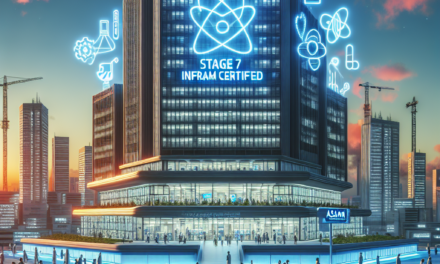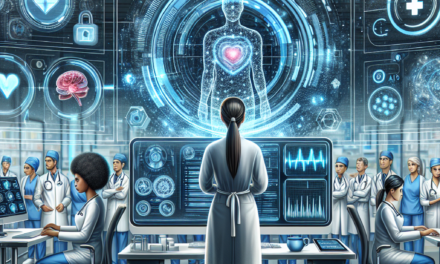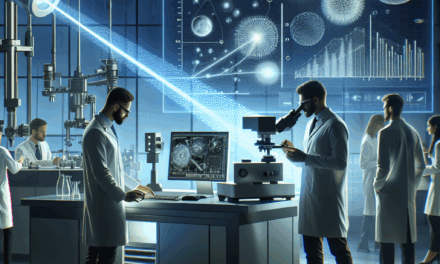The Human Edge: Unleashing Potential in the Age of Technology

In an era dominated by rapid technological advancements, the concept of the “Human Edge” has become increasingly significant. As artificial intelligence, automation, and machine learning continue to evolve, the unique qualities that humans bring to the table are more crucial than ever. This article delves into the various facets of the Human Edge, exploring how individuals and organizations can harness these qualities to thrive in a technology-driven world.
1. Emotional Intelligence: The Heart of Human Interaction
Emotional intelligence (EI) is a cornerstone of the Human Edge, encompassing the ability to understand, manage, and express emotions effectively. In a world where machines can process data at lightning speed, the human capacity for empathy and emotional connection remains unparalleled.
Understanding Emotional Intelligence
Emotional intelligence is often broken down into five key components: self-awareness, self-regulation, motivation, empathy, and social skills. These elements work in tandem to enable individuals to navigate complex social environments and build meaningful relationships.
- Self-awareness: Recognizing one’s emotions and their impact on thoughts and behavior.
- Self-regulation: Managing emotions in a healthy way, adapting to changing circumstances.
- Motivation: Harnessing emotions to pursue goals with energy and persistence.
- Empathy: Understanding and sharing the feelings of others.
- Social skills: Building and maintaining healthy relationships through effective communication.
The Role of Emotional Intelligence in the Workplace
In professional settings, emotional intelligence is a critical asset. Leaders with high EI are better equipped to inspire and motivate their teams, fostering a positive work environment. A study by TalentSmart found that 90% of top performers possess high emotional intelligence, highlighting its importance in achieving success.
Moreover, emotionally intelligent employees are adept at conflict resolution, collaboration, and adapting to change. These skills are invaluable in today’s fast-paced, ever-evolving business landscape.
Case Study: Google’s Project Aristotle
Google’s Project Aristotle sought to identify the key factors that contribute to high-performing teams. The study revealed that psychological safety, a concept closely tied to emotional intelligence, was the most critical element. Teams that felt safe to take risks and express themselves without fear of judgment were more innovative and productive.
This finding underscores the importance of fostering emotional intelligence within teams to enhance collaboration and drive success.
2. Creativity and Innovation: The Human Imagination Unleashed
Creativity and innovation are quintessentially human traits that machines struggle to replicate. While algorithms can analyze data and identify patterns, the human ability to think outside the box and generate novel ideas remains unmatched.
The Creative Process
Creativity involves a complex interplay of cognitive processes, including divergent thinking, problem-solving, and the ability to make connections between seemingly unrelated concepts. This process is often non-linear and requires a willingness to take risks and embrace uncertainty.
Innovation, on the other hand, involves applying creative ideas to develop new products, services, or processes that add value. It is the driving force behind progress and a key differentiator in competitive markets.
Fostering a Culture of Innovation
Organizations that prioritize creativity and innovation are better positioned to adapt to changing market conditions and seize new opportunities. To cultivate a culture of innovation, companies must:
- Encourage experimentation and accept failure as a learning opportunity.
- Provide employees with the resources and autonomy to explore new ideas.
- Promote diversity of thought by assembling teams with varied backgrounds and perspectives.
- Recognize and reward creative contributions.
Case Study: 3M’s Innovation Culture
3M is renowned for its commitment to innovation, with a long history of groundbreaking products such as Post-it Notes and Scotch Tape. The company allocates 15% of its employees’ time to pursue personal projects, fostering an environment where creativity can flourish.
This approach has resulted in a steady stream of innovative products and has solidified 3M’s reputation as a leader in innovation.
3. Critical Thinking: Navigating Complexity with Clarity
In an age of information overload, the ability to think critically is more important than ever. Critical thinking involves analyzing information objectively, evaluating evidence, and making reasoned judgments.
The Components of Critical Thinking
Critical thinking is a multifaceted skill that encompasses several key components:
- Analysis: Breaking down complex information into manageable parts.
- Evaluation: Assessing the credibility and relevance of information.
- Inference: Drawing logical conclusions based on evidence.
- Explanation: Clearly articulating reasoning and conclusions.
- Self-regulation: Reflecting on one’s own thought processes and biases.
The Importance of Critical Thinking in Decision-Making
Critical thinking is essential for effective decision-making, particularly in high-stakes situations. It enables individuals to weigh options, consider potential outcomes, and make informed choices.
In the workplace, critical thinking skills are highly valued, as they contribute to problem-solving, strategic planning, and innovation. A study by the World Economic Forum identified critical thinking as one of the top skills needed for the future workforce.
Case Study: NASA’s Apollo 13 Mission
The Apollo 13 mission is a testament to the power of critical thinking in crisis situations. When an oxygen tank exploded, jeopardizing the lives of the astronauts, NASA’s ground team had to quickly assess the situation and devise a plan to bring the crew safely back to Earth.
The team’s ability to analyze data, evaluate options, and make swift decisions was instrumental in the successful resolution of the crisis, highlighting the importance of critical thinking in high-pressure environments.
4. Adaptability: Thriving in a World of Change
Adaptability is a key component of the Human Edge, enabling individuals and organizations to navigate change with resilience and agility. In a rapidly evolving world, the ability to adapt is crucial for survival and success.
The Nature of Adaptability
Adaptability involves a willingness to embrace change, learn new skills, and adjust to new circumstances. It requires a growth mindset, characterized by a belief in the potential for personal and professional development.
Adaptable individuals are open to feedback, willing to take risks, and able to pivot when necessary. These qualities are essential in a world





